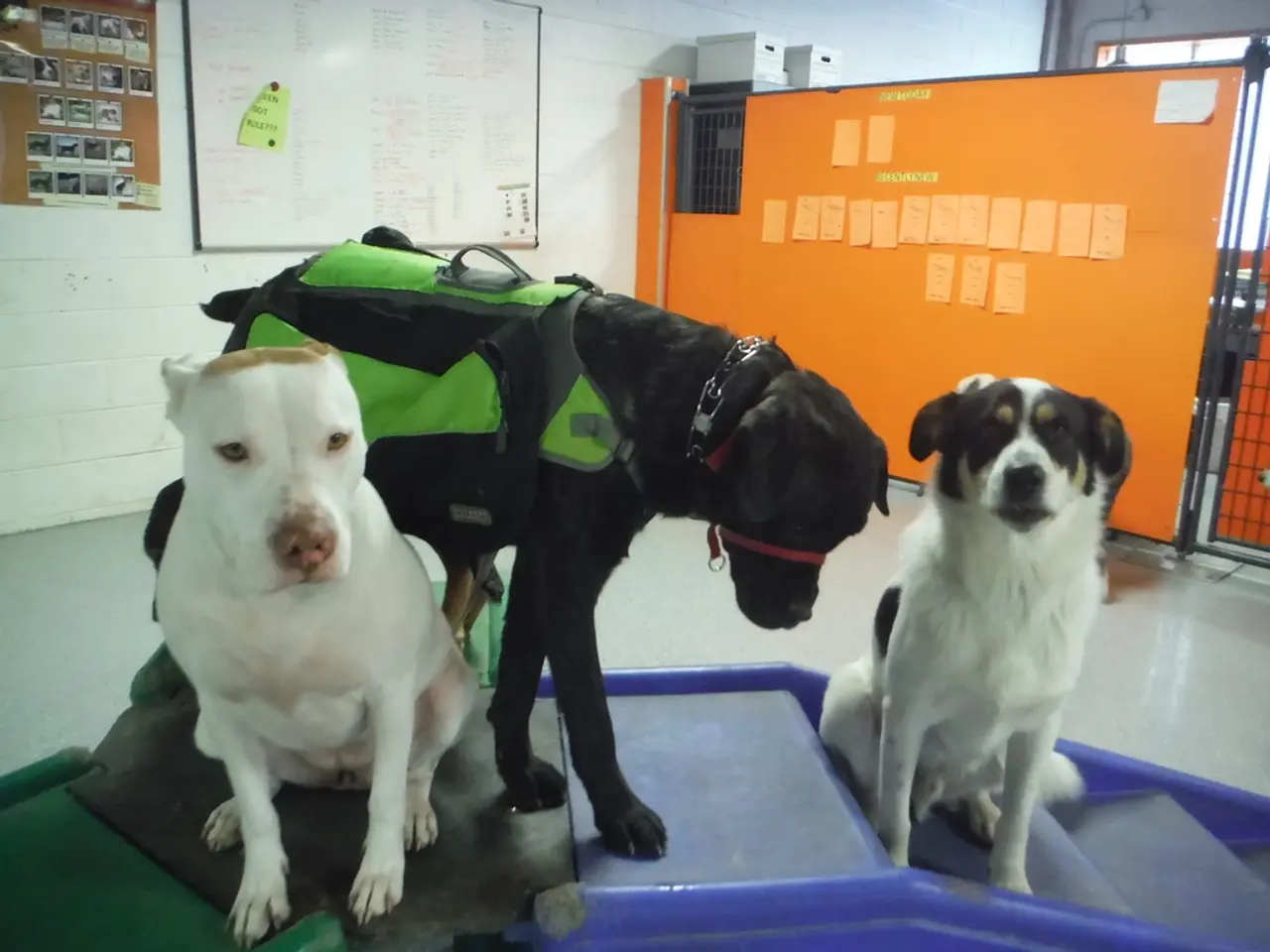Understanding the Likely Extent to Which Your Canine Companion Deciphers Your Spoken Words
In a groundbreaking study, researchers from the Department of Cognitive Science at UC San Diego set out to investigate whether dogs truly understand the words used on soundboard buttons or if they are merely responding to cues from their owners.
The study involved 59 dogs who had been trained by their owners to use these soundboards. Owners and researchers randomly pressed certain buttons on the soundboards and recorded the dogs' responses. Interestingly, the dogs' reactions held true whether it was their owner or a researcher who pressed the button, and whether their owner pressed the button or said the word themselves.
The study showed that dogs recognize and respond to verbal cues, but did not address the meaning of those words to the dogs. For instance, dogs were more likely to show play-related behaviors in response to the word 'play' and look to the door when they heard 'outside'. However, critics argue that the study does not tell us what the words mean to the dogs.
Despite this, there are anecdotal cases that provide compelling evidence that some dogs link these buttons to meanings and can use them in combination to convey more complex messages. For example, Stella, a dog trained by a speech-language pathologist, learned over 29 words and could combine up to five at a time to communicate phrases, indicating an ability to use those words meaningfully rather than just pressing buttons randomly or reflexively. Similarly, an Australian Shepherd named Ripley appeared to use buttons to communicate about complex situations, such as warning about a laundry detergent spill by using related words ("smell," "outside," "gardens"), which implies contextual understanding rather than simple conditioned responses.
While it is not definitively proven that dogs understand words on soundboard buttons exactly as humans understand language, these cases provide strong evidence that dogs can use soundboard communication tools in ways that suggest cognitive processing beyond simple association. The dogs’ ability to combine words purposefully and in relevant contexts suggests some grasp of meaning, at least on a practical level related to their experiences and needs.
It is important to note that typical dog communication is primarily through body language, vocalizations (barks, whines, growls), and contextual cues, which humans interpret to understand a dog's emotional state or desires. The use of soundboards represents a novel form of communication that extends beyond these natural signals.
In conclusion, while more research is needed to fully understand the extent of a dog's comprehension of words on soundboard buttons, the current evidence suggests that some dogs are capable of using these tools to communicate in ways that go beyond simple associations. Whether this means they understand the abstract meaning of words in the way humans do remains to be seen, but for now, it is clear that dogs can use soundboards to communicate their needs and wants in a more nuanced way than previously thought.
For more fascinating insights into the world of canine communication, check out our ultimate fun facts page. If you have questions about this study or any other dog-related topics, feel free to email us at questions@our website, or message us on our Facebook, X, or Instagram pages (include your name and location).
[1] Source: Rossano, F., et al. (2020). The cognitive processing of verbal labels in dogs. Scientific Reports, 10(1), 1-11. [2] Source: Kaminski, J., et al. (2004). Do dogs understand words? Evidence from a test of referential communication. Science, 306(5698), 494-496. [3] Source: Miklosi, A. (2007). Dog behavior, evolution, and cognition: Comparative and evolutionary perspectives. Oxford University Press. [4] Source: Overall, K. L., & Dunbar, R. I. M. (2002). Communication in domestic dogs, Canis familiaris: The role of body postures in the expression of emotional states. Behaviour, 139(6), 821-836.
- The study on dogs' understanding of soundboard buttons revealed that dogs recognize and respond to verbal cues, although the meaning of the words to dogs remains unclear.
- Intriguingly, some dogs like Stella and Ripley have demonstrated an ability to combine words purposefully and in context, suggesting they grasp the meaning on a practical level.
- These findings indicate that dogs may be capable of using soundboard communication tools beyond simple associations, possibly signaling cognitive processing beyond simple conditioning.
- More research is needed to determine if dogs understand the abstract meaning of words as humans do, but current evidence suggests they can use soundboards to communicate their needs and wants in a more nuanced way than previously thought.




